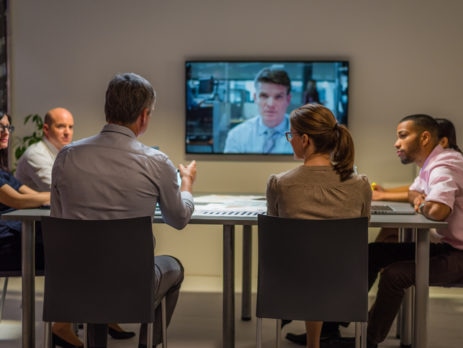Video Conferencing: Two Viewpoints On Your Best Options Today
Microsoft is on the verge of releasing several video conferencing systems under its Project Rigel banner. Simultaneously – Logitech, Polycom, and Crestron all have released or will be releasing products that include a Surface Pro 4 to provide conference control in the room as well as a variety of camera and speakerphone options.
By Eric Fritz and Ben Brotcke
From the Perspective of a Software Guy
Microsoft is on the verge of releasing several video conferencing systems under its Project Rigel banner. Simultaneously – Logitech, Polycom, and Crestron all have released or will be releasing products that include a Surface Pro 4 to provide conference control in the room as well as a variety of camera and speakerphone options. All of these new products are intended to give the “one touch” meeting join experience that I have come to expect and love from the Skype for Business room system.
I, (Eric) have been doing Unified Communications(UC) since Live Communications Server 2003 but I was never big on the video workload until the Lync and now Skype Room System(SRS) became available. I found myself finally having a good story to tell on how to replace the complicated and often difficult to use meeting systems of the past.
Project Rigel looks to give us an answer for upgrading existing rooms with stand-alone phones and TVs or monitors that aren’t centrally connected. This includes one option our customers are really clamoring for – the new Microsoft Surface Hub. However, it seems to have put customers in analysis paralysis when trying to figuring out what will be a better solution for them: SRS or Surface Hub.
In my opinion, each one has its place; SRS, Hub and Rigel and we are happy to help you figure it out.
Even in the past we knew that one size did not fit all, and too often we at Magenium would look to a third party for audio video(AV) integration. Tackling those large dividable conference rooms, training spaces or town hall type rooms with an SRS was not the right solution. You really need a multitude of screens, microphones, speakers and controller programming to get things humming along nicely!
Now, I came from a Microsoft unified communications background, but that didn’t really help with the big AV integration piece. I like to think that we at Magenium are always looking at the bigger picture, and we knew there was a big gap in our service offering. So what did we do? We filled it with the acquisition of eHome Design; a firm with deep expertise in big-league AV equipment and complex office build outs.
Bringing on Ben Brotcke and his eHome Design team to complete our Connected Home and Office practice has been tremendous for our customers and ourselves alike. I was at a recent Polycom event and was surprised to see how many companies are still siloed in either the Microsoft services or AV integration. Almost never did I see both at one place.
Microsoft has provided an amazing backend to bring all of our communications experiences together. We still have customers that come to us and just want to upgrade their rooms, treating them as stand-alone systems that rely on video conferencing bridges instead of looking for a unified communications solution.
Until the Microsoft Lync stage of the evolution, nothing really brought the hardware and software together. One of the most exciting announcements from Microsoft and Polycom is another step forward with Polycom Real Connect offering through Microsoft Office 365. Polycom has always been an option to bridge standards based video systems with on premise infrastructure. Polycom RealConnect Service in the cloud is set to preview in December 2016.
From the Perspective of a Hardware Guy
I, (Ben) came to Magenium with an Audio Video integrator’s background working mostly in custom residential and corporate spaces. One of the most challenging, yet rewarding, aspect of my work is being able to find the right solution for complicated spaces while meeting the requirements of our clientele.
While my background is more agnostic in the telepresence/video conferencing realm, I have come to appreciate the larger picture of unified communications. I will add an additional layer to the “one size does not fit all” in that one vendor very rarely fits all.
Let’s take for instance the Skype for Business room system where Microsoft provides a mostly locked down configuration for vendors to deliver their hardware solutions. Smart Technology’s SRS is one of Eric’s favorites as he finds them to easy to use and they enhance their offering with additional software to markup almost any other program with Smart Meeting Pro. And it works well for many!
I, on the other hand, favor the Crestron RL 2 as it allows for a singular point of control for ancillary devices in addition to almost infinite flexibility and has the capability of monitoring via Creston Fusion. With a Creston offering and my programming expertise, we have the capability to integrate various environmental controls (lights, HVAC, window treatments, etc.) and additional audio/video sources.
All things considered, various systems have their strengths and weaknesses. Because of our experiences with a wide variety of unified communication equipment, it allows us with complete certainty to know that we are able to provide what will truly be the best solution for our customer based on their needs.
